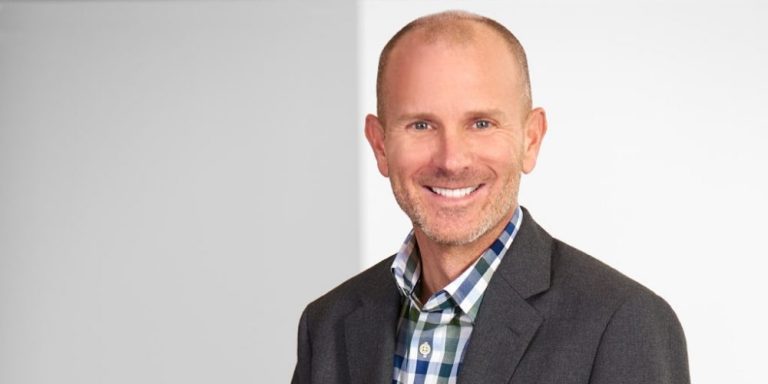HR executives need to role model the notion that successful business transformation involves personal change for them, and for the leaders on the executive team, writes Michelle Gibbings
The pace and quantum of change the world is undergoing has seen the World Economic Forum title it “The fourth industrial revolution”. Technology is changing all aspects of how we work and live, with the inevitable result being constant and rapid change in the workplace.
Now, more than ever, today’s HR executive needs to advocate and demonstrate the importance of consciously leading change. For an HR executive, being a conscious change leader goes beyond being a trusted advisor.
It’s being able to work across boundaries, embrace new ideas and learnings, and be innovative, authentic, compassionate and resilient. Most importantly, they role model the notion that successful business transformation involves personal change for them, and for the leaders on the executive team.
Start from the inside out
It’s much easier for a leader to sit back and identify how team members or colleagues need to change, than to identify what may need to change in them. To effectively lead change and make it stick, leaders need to firstly understand themselves and then be open to shifting their mindset, operating style and behaviour to suit the context of the change.
Faculty members at Harvard, Dr Robert Kegan and Dr Lisa Lahey, who have studied why many crucial change efforts fail, found that one of the core problems is the gap between what is required and a leader’s own level of development.
The HR executive should play a vital guiding role in helping the executive team better understand the prism through which they view the world, and how their leadership style will enhance or stall business transformation. This takes courage, and the willingness to challenge dominant paradigms.
Be alert to bias
Bias pervades decision-making, and most of it happens at the subconscious level. This is because people don’t make decisions on facts alone. They make decisions on hunches, feelings and gut reactions. That’s not to say that all these decisions will be bad. However, the brain discards information that doesn’t fit with its world view. It takes short cuts when it makes decisions, and it can be easily influenced. As
However, the brain discards information that doesn’t fit with its world view. It takes short cuts when it makes decisions, and it can be easily influenced. As humans we are constantly looking for ways to rationalise and substantiate our opinions, and so it’s easy to be blind to the obvious and closed to other people’s opinions.
The HR executive who leads consciously is aware of this challenge, and looks out for influencing factors and potential blind-spots. They encourage and invite diversity of thought, and dissenting opinions as they know it will lead to more informed discussion and ultimately, more progress and better business outcomes.
Encourage a growth mindset
A leader’s mindset impacts how the change is initiated, implemented and sustained.
The renowned Stanford academic, Carol Dweck, coined the terms – fixed and growth mindset. People who have a fixed mindset see intelligence as static – a fixed trait. Consequently, they want to always look smart and have all the answers. They believe that success is based on talent alone – not work. They ignore feedback and struggle to cope when things don’t go to plan.
In contrast, people with a growth mindset believe that intelligence can be developed through effort. They are therefore more eager to embrace learning, take on challenges and persist, despite setbacks. They love learning, often display higher resilience, and are more willing to learn from others and receive feedback.
Knowing it is a growth mindset that helps the leader be best positioned to lead through complex and ambiguous change, the HR executive should work with the executive team to understand how the group’s individual and collective mindsets are impacting the change.
This involves helping the executive team accept that adopting a growth mindset is a conscious decision, and necessary for the change to be successfully sustained. In doing this, the HR executive helps to establish a leadership approach where the leader is more:
- Open to feedback and able to hear difficult messages from people at all hierarchical levels
- Willing to reflect on situations and to examine how an event unfolded, so they can better understand their and other people’s reactions
- Comfortable trying new things, which is important as circumstances may require them to step up in a different way
Highlight the gaps
A leader’s brand is defined by the actions they take and how those actions are perceived by their colleagues, peers and team members. People notice what a leader does and doesn’t do, particularly when there are variances between what a leader espouses as their leadership values and their actions.
This is heightened during times of change. In fact, perceptions of inequity, unfairness, poor or absent leadership become intensified.
Leaders can be blind to this, as they can see their actions in a different light. The HR executive is in a unique position to be able to support the leader to see how their actions are seen by others. This isn’t easy, but it’s essential if the leader is to step up and lead consciously.
Roll with it
Working with (or as part of) the executive team, the HR executive is able to see how the change is progressing and what is stopping or impeding progress.
They can also take a ‘pulse-check’ on the team’s ability to withstand setbacks.
There’s no doubt that it’s easy to get excited about a new change initiative. However, as the work starts, challenges will inevitably be encountered. Obstacles and roadblocks that weren’t expected will arise, making progress slower and more difficult than planned. This often leads to de-scoping and resource re-allocation.
The HR executive can support the leaders to embrace this challenge and drive business transformation by encouraging a focus on:
- Eliminating the friction in the system that makes the change harder than it needs to be. This may involve removing bureaucratic processes and unnecessary activities
- Being clear about the project’s goals and what every person in the team needs to do to get there. They don’t get sidetracked by interesting, but irrelevant matters
- Problem-solving and looking for different ways to make the change happen
- The progress that has been made and keeping it visible. They celebrate this progress in a way that is meaningful to team members and stakeholders, without ignoring the challenges that lie ahead
- The work necessary to deliver the most effective results – quickly
- The future is filled with change. With change comes opportunity. There is a fabulous opportunity for the HR executive to play an even bigger role in ensuring the success of change in their organisation.
This is more than supporting and nurturing the development of conscious change leadership in the organisation and realising meaningful business transformation. It’s about supporting and nurturing such leadership in themselves.
Image source: iStock





